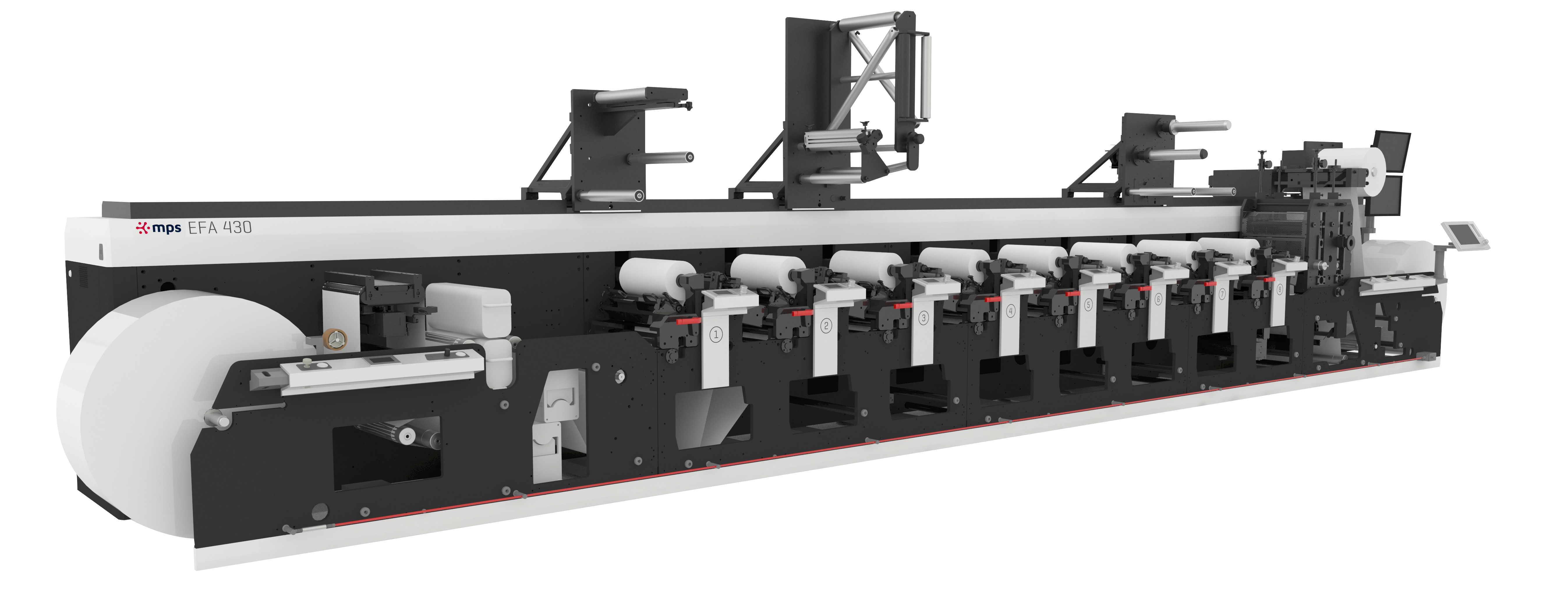Flexographic printing has grown to be the most used print technology in the label printing industry today. It provides the optimal combination in quality, productivity, and flexibility.
But what is flexo printing and how does it work?
This blog provides an introduction to flexo and how it can be a viable printing method for label printers.
Flexo explained
Flexo printing isn’t a new technology, but has evolved considerably with numerous innovations. These developments make flexo one of the most reliable ways to produce large orders of high-quality custom labels at rapid speeds.
This printing technique uses a flexible printing plate. In the past, these plates were made of rubber but nowadays businesses use flexible photopolymer printing plates.
The plates are wrapped around cylinders on a web press. The inked plates have a raised image and rotate at high speeds to transfer ink through small holes from the anilox roll to the substrate; each color requires a different printing plate.
Thanks to advancements in anilox rolls, printing plates, inks, and the printing press you can print images with high line count in flexo.
Flexo printing is unique because it adapts well to different materials (such as the MPS EFA multi-substrate flexo press that prints on thin film, paper, cartonboard, shrink sleeves, in-mold, lami tube and flexible packaging) and can use a wider range of inks including water-based and UV inks. Because this type of printing holds up and is adaptable, it can be printed on almost any kind of substrate like plastic, metal, and paper.
 MPS EFA 430 multi-substrate flexo press
MPS EFA 430 multi-substrate flexo press
Advantages and disadvantages of flexo printing
I’ve explained what flexo printing is, but what are its pros and cons? These are essential considerations in your decision-making process.
Flexo’s advantages:
- Runs at extremely high speeds and is ideally suited for long printing runs
- Prints on a wide variety of substrate materials
- Short set-up times with a minimum of waste; guarantees high-quality output
- Eliminates the need for additional work and cost: printing, varnishing, laminating and die cutting can be done in a single pass
- A relatively straightforward and controlled printing process
- Low cost of equipment and maintenance
Watch this video about Steinhauser’s choice for the MPS EF flexo printing press
Disadvantages of flexo:
- The cost of flexo printing plates is relatively high compared to other types of plates, but they last for millions of impressions if properly cared for
- Version changes are time-consuming to make
For many good reasons, flexographic printing is the most popular technology in the label printing industry.
I hope this blog helped you understand what flexo printing is and how it can help your business be more viable. At MPS, we’re in regular contact with customers to understand their evolving print technology requirements and develop innovative solutions to improve the printing process and customer experience.
If you have any questions about flexo printing or wish to discuss if it’s suitable for your business contact us here.